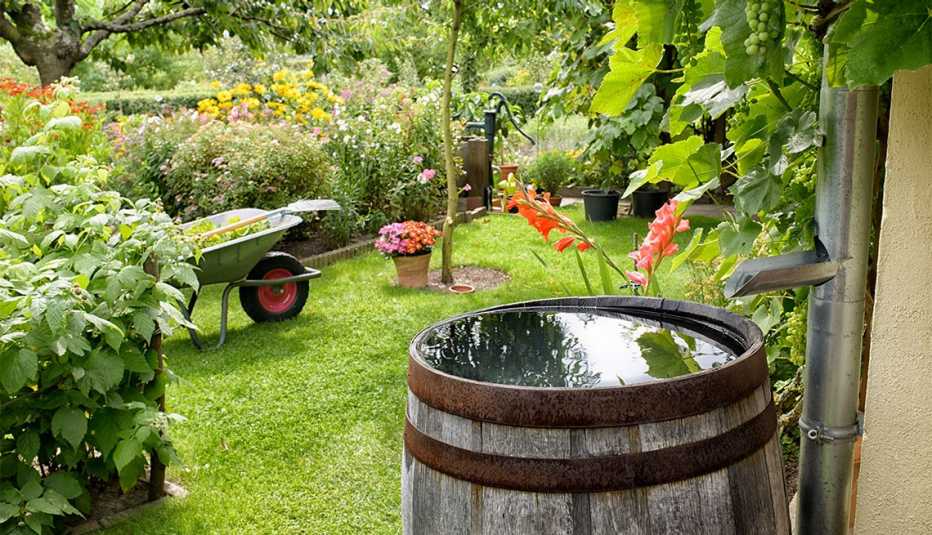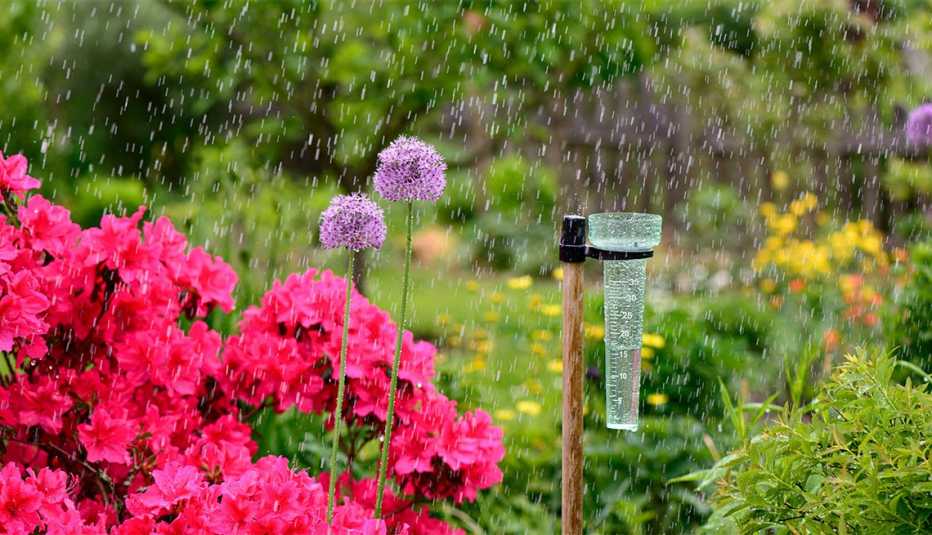AARP Hearing Center


No matter where your garden grows, water is the most precious tool. And in a time of record temperatures and more frequent droughts, it's important to know how to conserve and use it wisely in your own backyard.
Besides, no one wants to be dragging around a heavy hose or toting watering cans if they don’t need to. Embrace smart strategies that not only save water and money but make watering less demanding and easier on your body.
It all comes down to three basic strategies, says Pam Penick, author of The Water-Saving Garden: How to Grow a Gorgeous Garden With a Lot Less Water: capture the water you get, garden for water conservation and use water efficiently,
Some actions, such as rethinking your plant choices, are simple; others, like building sunken “rain gardens” to absorb runoff, take muscle or money. But most water-saving steps are scalable, meaning you can start small, see how it works and then expand when you have the time or budget, Penick says.
Ready to get gardening? Here are 10 steps you can take to lessen the time, energy and money you’re spending on watering:
Mulch your gardens
Once water is in your soil, use mulch or live ground covers like creeping thyme, to keep it from evaporating, says Signe Danler, an instructor in the Department of Horticulture at Oregon State University in Corvallis and a Master Gardener trainer. In the vegetable garden, water and mulch around your plants but then let the area between rows dry out before mulching. “The weeds simply can't germinate. They're not getting any water,” says Danler. “So, it cuts down on a lot of work by putting the water only where you want.”
Collect water
In dryer climates, like Austin, Texas where Penick gardens, homeowners sometimes use a bucket to collect the condensation from their central air-conditioning units.
If you get significant summer rainfall, connect a rain barrel to your downspout. For about $100, a 50-gallon barrel can provide enough water for patio plantings or a small garden. But check local and state regulations for restrictions on how much water you can collect from run-off since it's considered a public resource. And, if you have an older roof or gutters, be wary of lead, preservatives and other contaminants, says Christopher Enroth, a horticultural educator with University of Illinois Extension. Don’t use run-off on any edible crops he says. “But for an ornamental landscape, your shrubs, your perennials, trees, that's definitely a much lower risk.”



































































More From AARP
Should a Robot Vacuum Be Your Next Appliance?
Here are the features to consider and tips on how to use them
Should You Get a Gas or Electric Portable Generator
What to know when choosing a power station to keep devices running
Martha Stewart’s Perennial Advice for Gardeners
‘Martha Stewart’s Gardening Handbook’ is an Essential Guide to Designing, Planting, and Growing